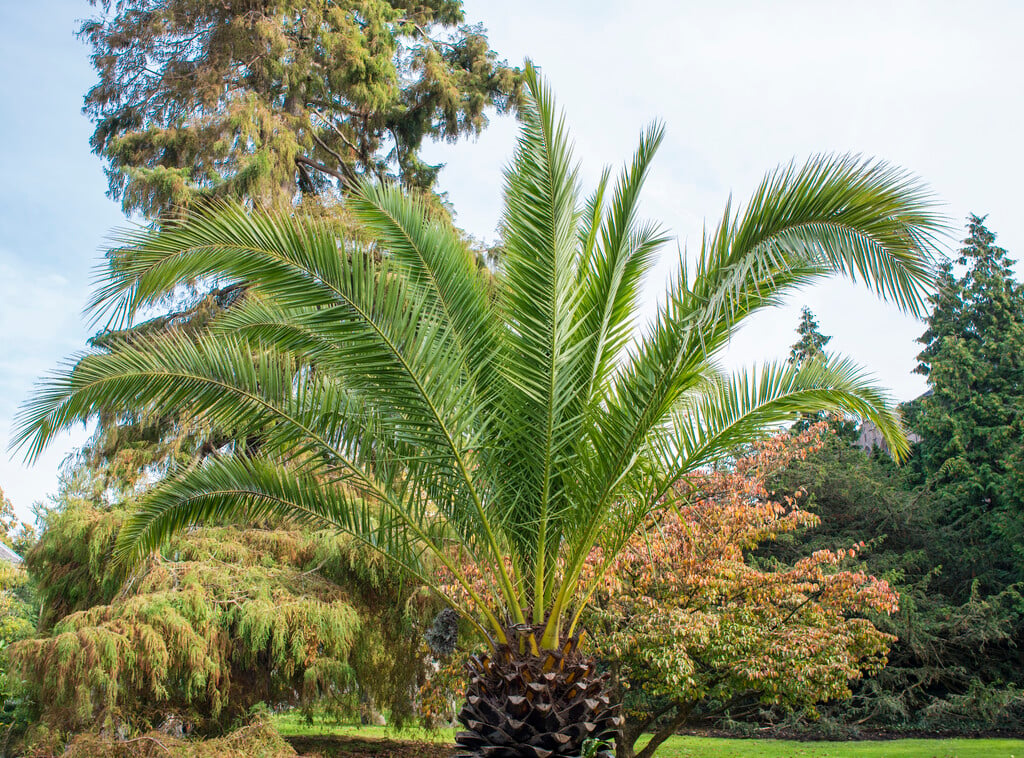Phoenix canariensis
Canary Island date palm
A tree-like palm to 15m or more, with a stout trunk and spreading deep green leaves to 5m in length, pinnately divided into many linear leaflets; drooping panicles of creamy-yellow flowers, followed by reddish-yellow fruits
Size
Ultimate height
Higher than 12 metresTime to ultimate height
20–50 yearsUltimate spread
Wider than 8 metresGrowing conditions
Moisture
Well–drainedpH
Acid, NeutralColour & scent
| Stem | Flower | Foliage | Fruit | |
| Spring | Green | |||
|---|---|---|---|---|
| Summer | Cream Yellow | Green | ||
| Autumn | Green | Red Yellow | ||
| Winter | Green |
Position
- Partial shade
Aspect
South–facing or West–facing
Exposure
Sheltered Hardiness
H2Botanical details
- Family
- Arecaceae
- Native to GB / Ireland
- No
- Foliage
- Evergreen
- Habit
- Bushy
- Genus
Phoenix are evergreen palms with solitary or clustered stems and narrowly oblong, pinnate leaves with linear segments, and drooping panicles of yellow flowers followed by fleshy ellipsoid fruits
- Name status
Correct
- Plant range
- Canary Islands
How to grow
Cultivation
Grow under glass or as a houseplant in a peat-free, loam-based compost in bright indirect light. When in growth water moderately and feed with a balanced fertiliser once a month. Water sparingly in winter. If moved outside during summer, locate in a sunny sheltered position with some midday shade
Propagation
Propagate by seed sown at not less than 25°C
Suggested planting locations and garden types
- Patio and container plants
- Architectural
Pruning
No pruning required
Pests
May be susceptible to glasshouse red spider mite, thrips, mealybugs and scale insects
Diseases
Generally disease-free
Get involved
The Royal Horticultural Society is the UK’s leading gardening charity. We aim to enrich everyone’s life through plants, and make the UK a greener and more beautiful place.
